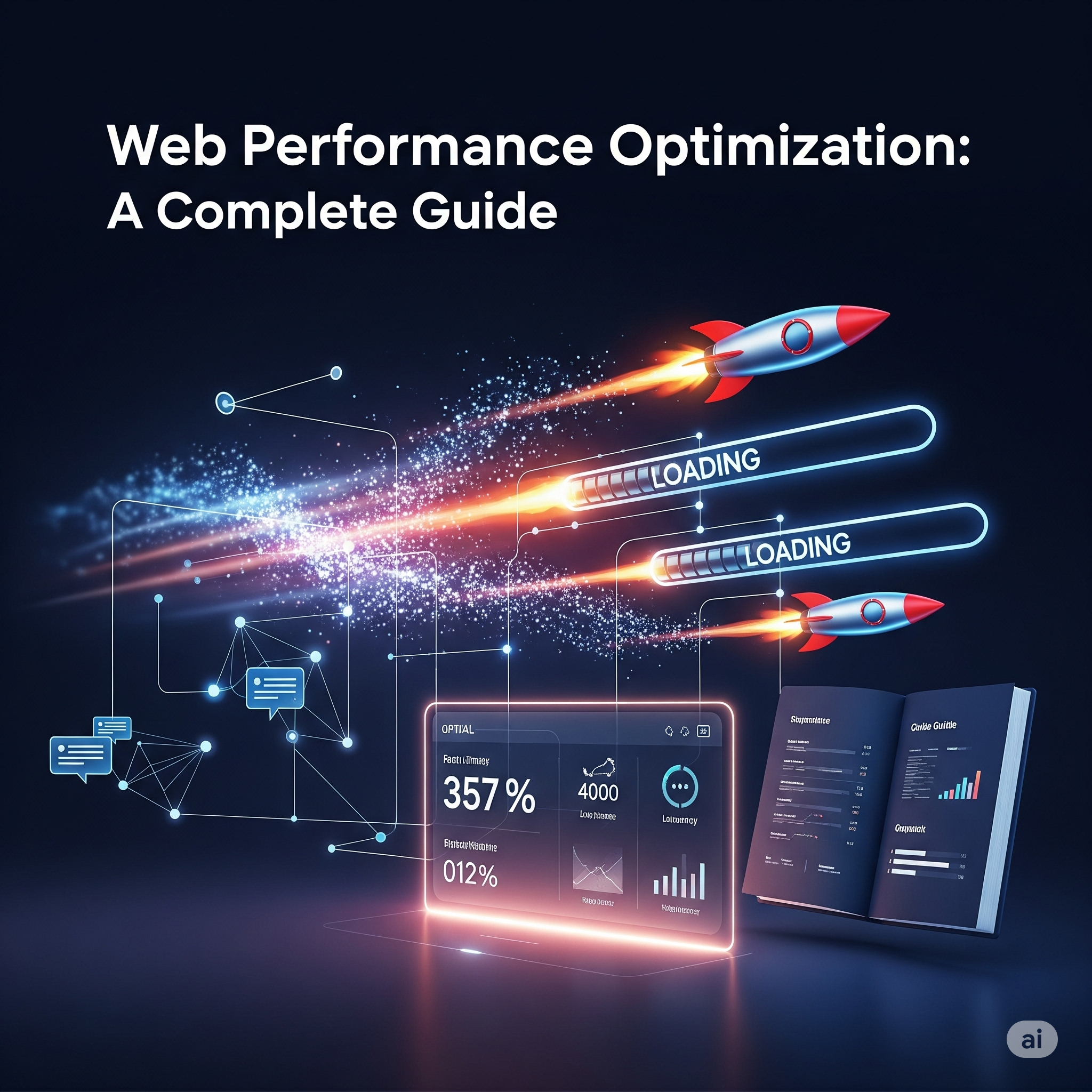Web Performance Optimization: A Complete Guide
Web performance directly impacts user experience, SEO rankings, and business metrics. In this comprehensive guide, we'll explore proven strategies to optimize your web applications for speed and efficiency.
Understanding Core Web Vitals
Google's Core Web Vitals are essential metrics for measuring user experience:
Largest Contentful Paint (LCP)
Measures loading performance. Good LCP scores are 2.5 seconds or faster.
First Input Delay (FID)
Measures interactivity. Good FID scores are 100 milliseconds or less.
Cumulative Layout Shift (CLS)
Measures visual stability. Good CLS scores are 0.1 or less.
Image Optimization
Images often account for the majority of a page's weight. Here's how to optimize them:
Modern Image Formats
<picture> <source srcset="image.avif" type="image/avif"> <source srcset="image.webp" type="image/webp"> <img src="image.jpg" alt="Optimized image" loading="lazy"> </picture>
Responsive Images
<img srcset="small.jpg 480w, medium.jpg 800w, large.jpg 1200w" sizes="(max-width: 480px) 100vw, (max-width: 800px) 50vw, 25vw" src="medium.jpg" alt="Responsive image" loading="lazy" >
JavaScript Optimization
Code Splitting
Split your JavaScript bundles to load only what's needed:
// Dynamic imports const LazyComponent = lazy(() => import('./LazyComponent')) // Route-based splitting const Home = lazy(() => import('./pages/Home')) const About = lazy(() => import('./pages/About'))
Tree Shaking
Remove unused code from your bundles:
// Instead of importing entire library import _ from 'lodash' // Import only what you need import { debounce } from 'lodash'
Minification and Compression
Use tools like Terser for JavaScript minification and enable gzip/brotli compression on your server.
CSS Optimization
Critical CSS
Inline critical CSS to prevent render-blocking:
<style> /* Critical CSS for above-the-fold content */ .hero { display: flex; align-items: center; } </style> <link rel="preload" href="styles.css" as="style" onload="this.onload=null;this.rel='stylesheet'">
CSS Purging
Remove unused CSS with tools like PurgeCSS:
// PostCSS config module.exports = { plugins: [ require('@fullhuman/postcss-purgecss')({ content: ['./src/**/*.html', './src/**/*.js'], defaultExtractor: content => content.match(/[w-/:]+(?<!:)/g) || [] }) ] }
Resource Loading Strategies
Preloading
Preload critical resources:
<link rel="preload" href="font.woff2" as="font" type="font/woff2" crossorigin> <link rel="preload" href="hero-image.jpg" as="image">
Prefetching
Prefetch resources for future navigation:
<link rel="prefetch" href="/next-page.html"> <link rel="dns-prefetch" href="//external-api.com">
Service Workers
Implement caching strategies with service workers:
// Cache-first strategy for static assets self.addEventListener('fetch', event => { if (event.request.destination === 'image') { event.respondWith( caches.match(event.request).then(response => { return response || fetch(event.request).then(fetchResponse => { const responseClone = fetchResponse.clone() caches.open('images').then(cache => { cache.put(event.request, responseClone) }) return fetchResponse }) }) ) } })
Database and API Optimization
Query Optimization
Optimize database queries:
-- Use indexes CREATE INDEX idx_user_email ON users(email); -- Avoid N+1 queries SELECT users.*, profiles.* FROM users LEFT JOIN profiles ON users.id = profiles.user_id;
API Response Optimization
// Implement pagination app.get('/api/posts', (req, res) => { const page = parseInt(req.query.page) || 1 const limit = parseInt(req.query.limit) || 10 const offset = (page - 1) * limit const posts = getPosts({ limit, offset }) res.json({ data: posts, pagination: { page, limit, total: getTotalPosts() } }) })
Caching Strategies
Implement multiple levels of caching:
// Redis caching const redis = require('redis') const client = redis.createClient() app.get('/api/user/:id', async (req, res) => { const userId = req.params.id const cacheKey = `user:${userId}` // Check cache first const cached = await client.get(cacheKey) if (cached) { return res.json(JSON.parse(cached)) } // Fetch from database const user = await getUserById(userId) // Cache for 1 hour await client.setex(cacheKey, 3600, JSON.stringify(user)) res.json(user) })
Monitoring and Measurement
Performance Monitoring
Use tools like:
- •Lighthouse: Automated auditing
- •WebPageTest: Detailed performance analysis
- •Real User Monitoring (RUM): Track actual user experiences
Performance Budgets
Set and enforce performance budgets:
// webpack-bundle-analyzer module.exports = { performance: { maxAssetSize: 250000, maxEntrypointSize: 250000, hints: 'error' } }
Advanced Techniques
HTTP/2 and HTTP/3
Leverage modern protocols:
- •Server Push for critical resources
- •Multiplexing to reduce connection overhead
- •Header compression
Edge Computing
Use CDNs and edge functions:
// Vercel Edge Function export default function handler(request) { const country = request.geo.country return new Response(`Hello from ${country}!`, { headers: { 'cache-control': 'public, max-age=3600' } }) }
Conclusion
Web performance optimization is an ongoing process that requires attention to multiple aspects of your application. By implementing these strategies systematically and monitoring their impact, you can create fast, efficient web experiences that delight users and improve business outcomes.
Remember to measure before and after implementing optimizations, and always prioritize the changes that will have the most significant impact on your specific use case.
